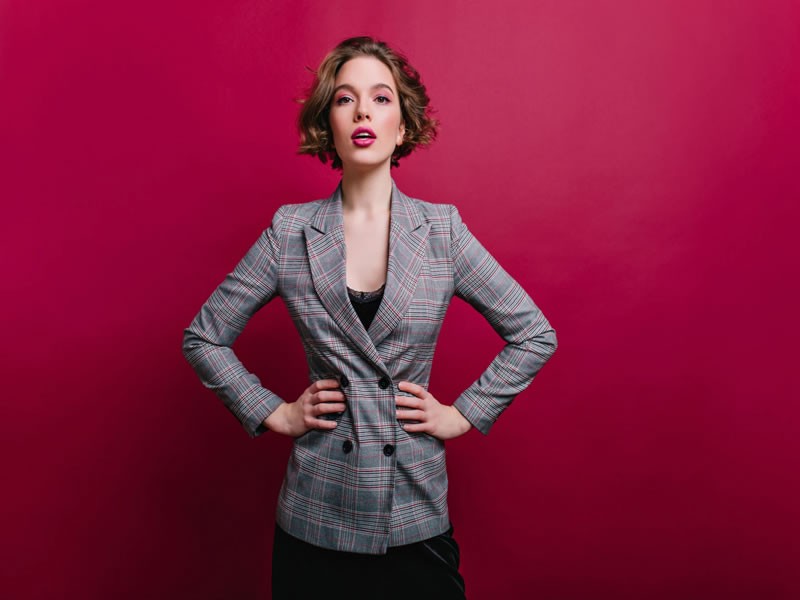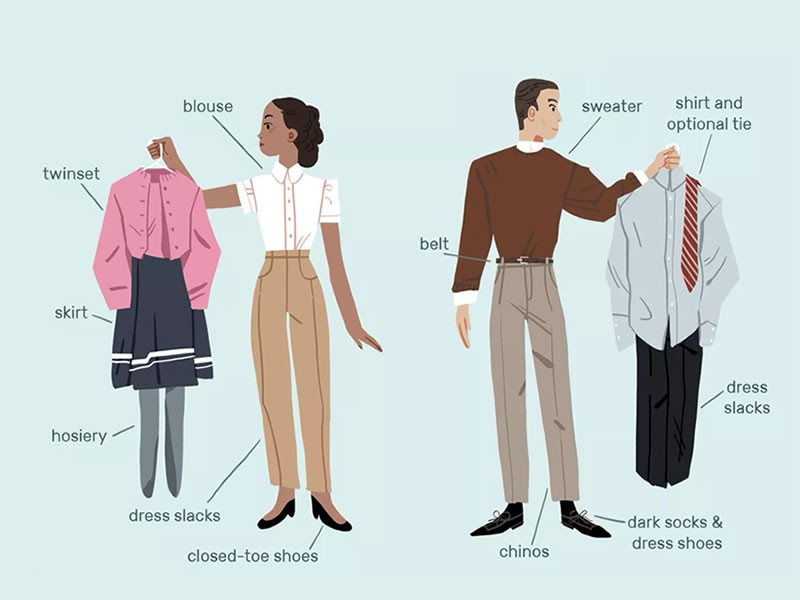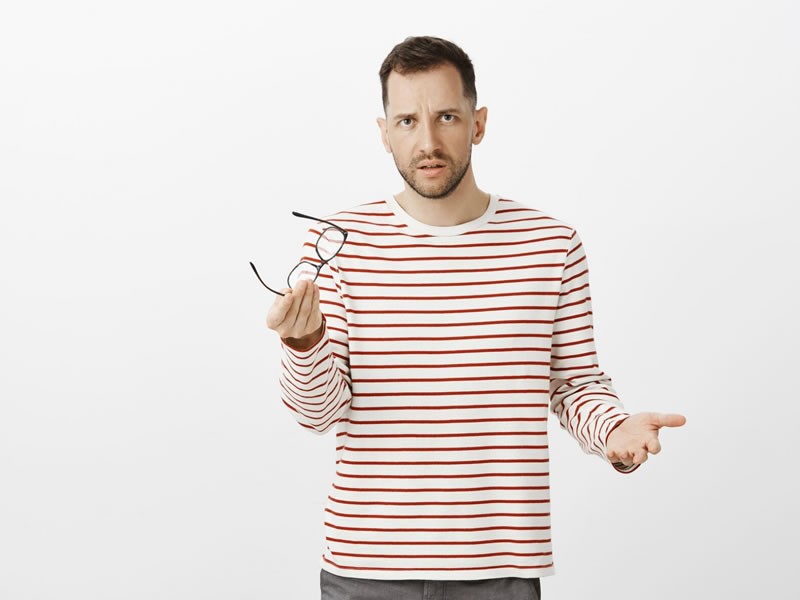Insight Blog
Agility’s perspectives on transforming the employee's experience throughout remote transformation using connected enterprise tools.
13 minutes reading time
(2602 words)
What Is A Business Casual Dress Code? Tips and Examples For 2024
While the term "business casual" can mean different things to different people, following these general guidelines will help you make the right impression in any professional setting.
The business dress code has altered dramatically in recent years. Many well-known CEOs are now frequently spotted in casual attire.
With 'casual Friday' introduced in the late 1960s and the increase of individualism among employees, more and more companies are allowing employees to wear whatever they choose to work.
Many believe that the business dress code has come to an end with the rise of business casual attire in the workplace. There is no one-size-fits-all formula for business causality, and its meaning might differ from organization to organization.
What is business casual attire?
So are jeans business casual? What is business casual business? We will dig deeper into business casual women vs business casual men.
Business casual, also known as smart casual, is the perfect compromise between formal and casual attire, suitable for various workplace settings.
This dress code is a departure from traditional business wear, offering a more relaxed yet professional appearance. Business casual outfits prioritize comfort while incorporating elements of both formal and casual styles.Consider a scenario where I opt for a pleated skirt paired with a short-sleeved blouse for my day at the office. Should the air conditioning be chilly, I might use a cardigan or a colored blazer to stay warm while maintaining a polished look.
The essence of business casual is elegance coupled with comfort. If you spot such an outfit on Pinterest, you'd likely envision a cozy office setting in the background.
Adopting a business casual approach to dressing enhances employee comfort and flexibility and encourages the expression of individual preferences and styles. When employees feel relaxed in their attire, it often translates to improved performance and productivity levels in the workplace.
Why is the business casual dress code misunderstood?
One of the reasons why business casual is so widely misunderstood is that there is no agreed-upon standard definition.
Business casual dress guidelines are frequently misunderstood or taken to extremes since the idea remains ambiguous.
This may lead some employees to believe that the no suit required gives them free rein to dress however they like.
This article will explain what a business attire dress code is and provide tips for men and women.
What is business casual?
So the question is whats business casual? Well If you're unsure what "business casual" means, you're not alone. This dress code can be confusing for many people, especially those who are new to the professional world.
Essentially, business casual is a style of dress that is less formal than traditional business attire, but still looks professional and put-together. It typically includes items such as dress pants or khakis, a button-down shirt or blouse, and dress shoes.
However, what exactly constitutes "business casual" can vary depending on the workplace and industry. It's important to check with your employer or company dress code policy to ensure that you're dressing appropriately for the situation.
By understanding the basics of business casual look, you'll be better equipped to make the right clothing choices for any professional setting.
Business casual outfits can be anything from blazers and work-appropriate tops to shoes and button-downs. Thus, business casual has evolved over time to reflect the ever-changing world of professional attire.
Defining how to dress business casually is a challenge because there is no universal definition. More and more workplaces are implementing business-casual or even "smart casual" clothing codes, business casual shoes, which can be aggravating. However, most workplaces have introduced some unsaid norms.
For women, business casual means no jeans, shorts, or short dresses or skirts; for males, it means optional ties, and a rotating wardrobe of button-downs or blouses is all that is required.
So, it's more important to avoid a list of "don'ts" than it is to follow a list of "dos," and it can vary a little depending on your personal style, preference, and the way you display your gender in public.
Click here to download a casual dress code policy template, by Castle Associates Ltd
Read more: 8 Tools To Power Your Remote Business
What is business casual for women? (Tips and ideas)
There are factors that can dictate business casual for women, like the location of the workplace, job type, and office culture. So, business casual looks for women clothes might differ greatly depending on the abovementioned factors. However, a typical business casual outfit for ladies includes the following items. What does business casual meaning?
Business casual is a loosely defined dress code in the Western context. It is often regarded as a blend of casual attire with elements of sophistication, akin to a well-tailored lounge suit typically worn in formal settings. This style is commonly embraced in white-collar work environments.
Shoes
In terms of business casual attire women, heels, flats, and loafers are the most common footwear options. It's best to stick with one of the following options when it comes to the type of shoe (open-toed or stiletto) that the employee or job requires (sandals and sneakers are usually frowned upon).
Shirts and blouses
A well-fitting, flowing, and/or ironed blouse or button-down is always appropriate, regardless of the unique business dress code. If possible, try to limit the use of brand logos. In case you forget about this piece of advice and notice brand logos in photos taken at your workplace, you can outsource retouching services to remove distracting elements from your pics.
Blazers
Blazers are a staple for both men and women in the workplace, and they seem to be a universal part of a professional dress code. Keep a variety of blazers in your wardrobe, including
- Black
- Grey
- Blue
However, wearing a blazer in a vibrant color can be eye-catching. So, try to wear it with a variety of other outfits.
Pants
Wide-leg or tailored pants, dress pants, chinos, or suit pants are always appropriate attire for formal events. Some offices may allow jeans, but check your workplace's dress code policy before heading to the office. Printed pants or bright colors may be appropriate in some situations, but it's always a good idea to check over your workplace beforehand.
What is business casual for men? (Tips and ideas)
For business casual clothing for men, the tie-or-no-tie decision is often the deciding factor in determining whether or not they are dressed professionally.
However, every workplace is unique, and there is a wide spectrum of what constitutes business casual. There are still a few essential rules to keep in mind for men.
Men adhering to the business casual dress code usually opt for tailored slacks, button-down shirts, knitted sweaters, and blazers. Emphasizing high-quality garments that fit impeccably and exude refinement is crucial, as they are pivotal in projecting a professional image regardless of the setting.
To effectively manage your business wardrobe, it's imperative to consider your workplace's unique dress code policies and norms. Take the time to understand what is deemed appropriate within your office or industry, and leverage this insight to inform your attire decisions each day.
Shoes for business casual for male
It's never a bad idea to wear loafers or formal shoes.
Shoes that you should avoid:
- Shoes with open toes
- Sandals
- Sneakers
In terms of color, there aren't many guidelines to follow except to keep it looking polished and professional at all times, this is considered business casual for male.
Pants
Dress slacks or chino pants/khakis will keep you in line with your workplace's dress code, even if your progressive business allows jeans.
Wearing khakis in a business casual setting gives you the ability to wear both a formal shirt and a more laid-back one.
Sweaters
Most workplaces allow sweaters or vests to be worn. If you're looking for a classic business-casual appearance, stick to fine-knit sweaters that can be layered over button-downs or shirts and leave the collar exposed.
Jackets and blazers for men
Wearing a well-tailored blazer or jacket over your everyday work attire can elevate it to the next level of professionalism.
For example, if you have an important meeting or presentation coming up and are concerned that wearing a button-down shirt alone would make you appear too casual. Thus, you should consider wearing a jacket or blazer.
Shirts
Shirts with long sleeves and a collar are best for males.
Long-sleeved collared shirts are the most common choice. No tie gives it a more relaxed look than a suit-and-tie ensemble. Casual business for men typically includes a blend of tailored slacks, polo shirts, and loafers, offering a polished yet comfortable look for the workplace.
What is business casual attire in 2024?
Even in the most traditional workplaces in the West, business casual attire has grown in popularity in the last decade or two, and it is now the norm rather than an exception. There is no longer a requirement for a tie at government facilities in the United Kingdom.
Moreover, many people now work from home, so traditional office attire is all but extinct after the COVID-19 pandemic.
What is the business casual dress code for remote workers?
The business casual dress code refers to formal business clothes with some laid-back flourishes thrown in.
Or if you're working from home, even a pair of tactical jeans.
One of the benefits of working from home is that you can wear anything you want. However, don't stay in your pajamas all day. Instead, you can choose a business casual dress code for remote work.
What Not To Wear For A Business Casual Dress Code
While creative expression is flexible within a business casual dress code, employees must remain mindful not to violate any guidelines. Particular articles of clothing should be avoided to maintain a professional appearance, including:
- Ripped jeans
- Worn-out sneakers
- Flip-flops
- Stained T-shirts
- Clothing featuring offensive words or images
Specifically for women, it's advisable to steer clear of the following:
- Strappy sandals
- Denim or ripped pants with bold prints
- Brightly colored attire
- Spaghetti straps or crop tops
- Activewear, Sportswear or leggings
- Off-the-shoulder shirts or dresses
- T-shirts
- Tennis shoes and hooded customized sweatshirts
Adhering to these guidelines ensures that employees present themselves appropriately while embracing the business casual dress code.
Wrapping up
In essence, dressing in business casual attire for the workplace isn't overly complicated. While adhering to this dress code isn't particularly challenging, it's essential not to overlook its significance. Managers play a crucial role in setting a positive example, and employees should strive to emulate this standard – both figuratively and literally at times.
Naturally, the interpretation of business casual can vary based on factors such as gender, company culture, and even geographic location. While there's room for individual creativity, maintaining a professional appearance without crossing any boundaries is paramount.
By leveraging cutting-edge technology to implement and enforce dress codes, companies can position themselves for success. When employees present themselves appropriately in the workplace, positive outcomes are sure to follow.
FAQ
Are jeans business casual
The classification of jeans as business casual attire can vary depending on the workplace culture and specific dress code policies. In some workplaces, particularly those with a more relaxed environment, dark, well-fitted jeans may be considered acceptable for business casual wear.
However, jeans might not be appropriate for business casual attire in more formal or traditional settings. It's essential to refer to company policies or seek clarification from supervisors to determine whether jeans are acceptable within the business casual dress code.
What sets business casual apart from smart casual?
Another dress code frequently mistaken for business casual is smart casual. Smart casual and business casual represent distinct styles of professional attire.
While business casual incorporates traditional business elements like khakis and button-down shirts, smart casual introduces fashionable clothing items such as leather sneakers, vibrant prints, and eye-catching accessories. When uncertain, it's advisable to adhere to a business casual attire until you feel comfortably acquainted with the company's dress code.
What are suitable business casual colors?
When selecting suitable colors for business casual attire, aim for a balance between comfort and professionalism. Think of it as seamlessly blending elements of casual and formal wear.
Opt for neutral tones like tan, gray, black, navy, white, brown, and beige. While bold colors can add flair to an outfit, incorporate them in moderation – perhaps through small accents rather than complete ensembles.
For example, pair black dress pants with a subtle pink blouse and black accessories. Alternatively, consider an all-neutral ensemble complemented by a vibrant handbag or shoes accented with a matching belt.
Can I get in trouble for not wearing the correct business attire?
You could face consequences for not adhering to the correct business attire in certain workplaces.
Many companies have specific dress codes that employees are expected to follow, including guidelines for business attire. Deviating from these expectations could result in disciplinary action, mainly if your attire is inappropriate or unprofessional.
It's essential to familiarize yourself with your company's dress code policy and ensure you comply to avoid potential issues.
Is business casual attire necessary for remote work?
Remote work offers numerous benefits, with increased productivity being just one of them. Many employees appreciate the freedom to work from home in comfortable attire like athletic pants.
However, in a world where cameras are often on during virtual meetings, maintaining a presentable appearance remains essential, even when working from your living room. Moreover, since clothing can influence mood, changing out of pajamas can help transition into a work mindset, even within the home environment.
While a remote business casual policy may be more relaxed, establishing some guidelines can still be beneficial. Like an in-office dress code, remote attire standards will vary depending on company culture, industry norms, and specific contexts.
For instance, expectations for attire during internal meetings may differ from those for client-facing calls. Nevertheless, you can opt for professional attire from the waist up while staying comfortable in sweatpants below the camera frame.
This approach allows you to balance comfort and professionalism during remote work.
What are the Common Mistakes in Business Casual Attire?
Common mistakes in business casual attire include dressing too casually, such as wearing shorts or flip-flops, neglecting to ensure proper fit of clothing, and opting for overly bold patterns or colors.
Additionally, failing to consider the workplace culture or the nature of a specific event when selecting an outfit can also be a mistake.
Biz casual Attire
What is business casual?
Biz casual Attire is a style of dress that blends professional and casual attire. It typically includes slacks, khakis, button-down shirts, blouses, and other polished yet comfortable clothing. Jeans and sneakers are generally avoided unless specified by the workplace.
What is business casual casual for women?
For women, business casual includes blouses, sweaters, skirts, dresses, tailored pants, and closed-toe shoes. Business casual for females can include accessories but should be minimal and professional.
What is casual business casual for men?
So what is casual business casual attire consists of dress shirts, polo shirts, slacks, chinos, loafers, and occasionally sports jackets. Ties are optional but not mandatory.
Can jeans be considered business casual attire?
Jeans may be allowed in some workplaces with a relaxed dress code but should be dark, well-fitted, and free of rips or embellishments.
Categories
Blog
(2588)
Business Management
(318)
Employee Engagement
(204)
Digital Transformation
(172)
Intranets
(119)
Growth
(117)
Remote Work
(61)
Sales
(48)
Collaboration
(37)
Culture
(29)
Project management
(29)
Customer Experience
(26)
Knowledge Management
(21)
Leadership
(20)
Comparisons
(5)
Ready to learn more? 👍
One platform to optimize, manage and track all of your teams. Your new digital workplace is a click away. 🚀
Free for 14 days, no credit card required.

















